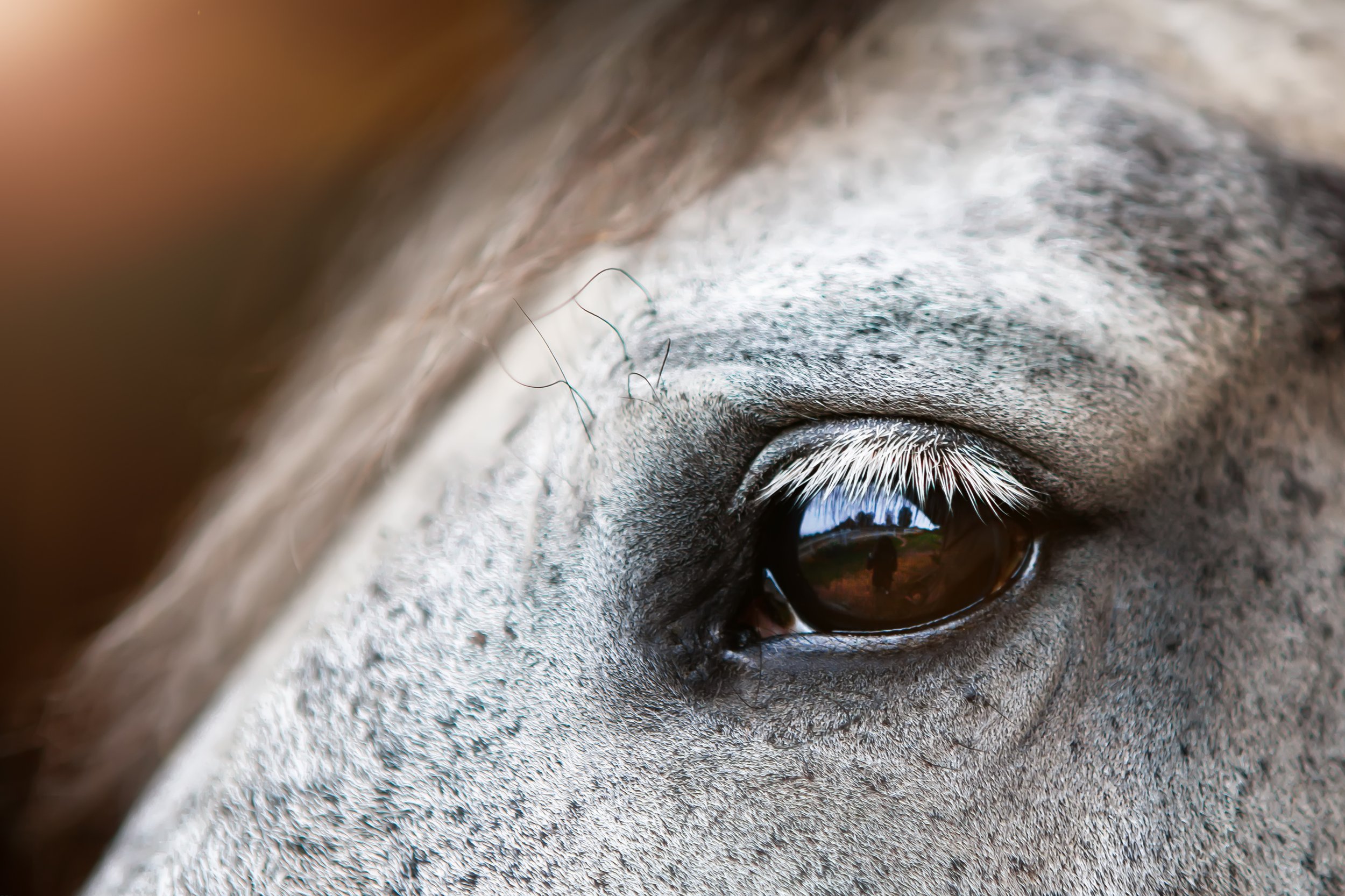How Can I Tell if My Horse Has an Eye Problem?
How Can I Tell if My Horse Has an Eye Problem?
Horses are fascinating creatures! They are beautiful, majestic, energetic, and quite curious! Their eyes are very large compared to other mammals and continuously exposed to environmental irritants and pathogens. Also, they are laterally located to have a wide visual field against predators (don't play "hide and seek" with a horse – he will find you!). Those characteristics, plus the curious nature and temperament of horses, put them at risk of eye injuries.
So how can one tell that his/her horse has an eye problem? Sometimes it is quite apparent, with the horse completely shutting their eye and not opening due to extreme pain. In such instances, however, this means the condition is severe and too far advanced to be able to save the vision or globe. It is essential to learn and be aware of the initial signs of an eye problem in horses to maximize the chances of recovery and maintenance of vision and of the eyeball itself.
One of the first signs of a painful eye in horses often is the position of the eyelashes. Look carefully at your horse's eyelashes, preferably staring at both eyes from the front at the same time. In a healthy, non-painful eye, the eyelashes of both eyes should be pointing outwards (sometimes even slightly upwards), perpendicular to the eyeball itself. If you notice that the eyelashes on one side of the face (or maybe both!) are pointing downwards, that may be a sign of ocular pain and initial ocular disease.
Another sign that your horse might have an eye problem is ocular tearing (or "watering"). Mild tearing or watering could be a sign of something as simple as mild allergies or blocked nasolacrimal duct. However, tearing or "watering" could also be an early sign of pain due to grave conditions, such as corneal ulcers and equine recurrent uveitis ("moon-blindness"). Those conditions could lead to blindness if not readily treated.
Changes in the coloration of the eyeball (white or blue haze), hair loss and/or redness around the eye, and mild squinting are also indicative that something is wrong. It is common for horses to rub their eyes when there's mild discomfort, and this conduct may exacerbate the initial problem. Sometimes, excessive rubbing may even lead to other conditions such as corneal ulcers, lodgment of a foreign body, and even eyelid lacerations.
At the first signs of any of those symptoms of pain, the best conduct is to contact your veterinarian immediately, as some ocular conditions may deteriorate within 24 hours. Your veterinarian will be able to perform an initial assessment and determine if an evaluation with a board-certified ophthalmologist is indicated. The goal is to identify and treat ocular conditions as soon as possible to optimize the chances of preserving vision and comfort. Identifying those initial signs of ocular problems and obtaining help from your veterinarian are the first (and crucial) steps on achieving those goals.

